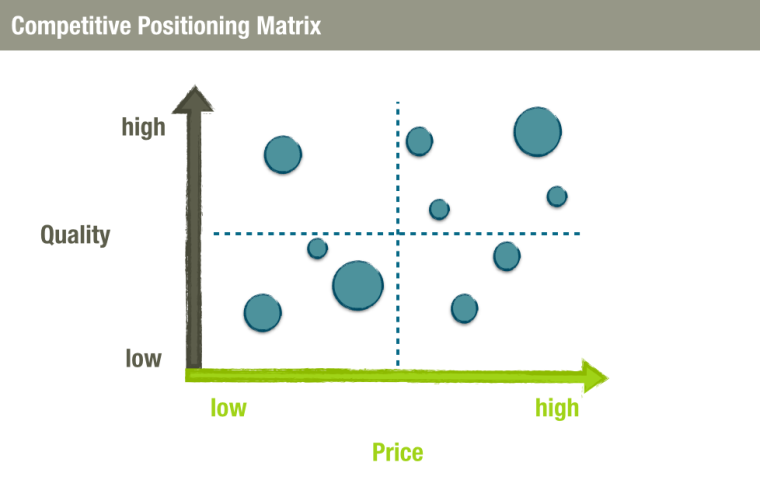Being an entrepreneur is attractive for many reasons. Some people think about opening a business all their life but never get around to actually doing it. They are living on ‘Someday Isle’ as motivational speaker Jack Canfield often likes to say. Someday, I’ll tidy up the garage. Someday, I’ll hang that picture. Someday, I’ll open a business.
Then there are people who open one or more businesses, hustle their way through whatever gets thrown their way, and make it with a little bit of luck and lots of ambition. I am very familiar with that kind of person. As a matter of fact, I see this person every day when I look in the mirror.
Then there are the people in between which is where most people are at. You have a million business ideas or maybe just this one nagging ideagasm that just doesn’t seem to go away. The question is, where do you start? How do you know whether a business idea is worth pursuing?
I met someone in this exact situation just a few weeks ago when I was speaking at Pubcon and it occurred to me that even the most seasoned entrepreneurs still find themselves constantly evaluating business ideas. It can be quite difficult to know whether it’s worth the commitment and investment your ideas may require — which is why most people I know approach this systematically.
How to Find out Whether a Business Idea is Worth Pursuing
The short answer is: if you would have to spend the rest of your life regretting never having pursued one specific idea, go ahead and start your business because life is too short for regrets.
Unfortunately, not every decision is as straight forward because sometimes the thing you would be regretting the most is never having tried any of your ideas and there is no specific idea that you have set your heart on at the moment.
For those of us who have a variety of business ideas and want to narrow it down, here are five ways to find out whether your business idea is a yay or a nay.
1. What Do Competitors Advertise?
You can go around and ask potential competitors what they think their strengths are. The issue with that is two-fold: a) they might not respond at all and b) what they say might not correspond to what their numbers are saying. One easy way to find out what sells for them is to check out their online ads. Whatever makes them most competitive in their given market is 99 percent of the time literally spelled out in their online text ads.
Let’s look at a concrete example and pretend the business idea is to sell shoes online. We can now go on Google and type in “buy shoes online”, have a look at the ads, and figure out what the general selling points in the industry are.
Here are some of the ads that may show up for the keyword “buy shoes online”:

Looking at the screenshot above, you can tell instantly that companies advertise only two things:
- Their own brand
- Discounts
Additionally, shipping seems to be important as well.
What This Means for Your Business Idea
If you were looking into selling shoes online, you would now know based on the ad analysis that you either need to have a known brand or be very competitive with prices and have flawless shipping set up. New businesses don’t have a known brand, so you either need to be aware of the fact that you need a lot of budget to compete as a brand or you now know that your only way is to beat people’s prices and better have the fastest free shipping in place that the world has ever seen.
Looking at these ads as a marketer, you also notice that at least three of these 10 ads are part of an at least medium scale campaign that uses dynamic keyword insertion or that the ads are part of a dynamic search campaign.
How do I know? Check out the heading of these three ads that are highlighted below:

This looks like dynamic keyword insertion which is a code that is frequently used by advertisers that have to set up a medium-sized campaign with around 80k+ keywords. All this code does is it automatically inserts the keyword that was triggered by the search query in the heading of the ad. You can determine the capitalization of those keywords with a small code modification which is what tipped me off here.
My keyword was “buy shoes online” and those ads say “Buy Shoes Online” with every word capitalized – to automatically capitalize every word just so happens to be the most popular code. If there is space after the code, you could also add the brand name as 6pm seems to have done here. Using the code is a great way to get a good click-through-rate on AdWords while setting up thousands of ads with Excel in a relatively short amount of time.
Dynamic Search Campaigns are frequently used for large inventory e-commerce businesses, so either way it seems that whatever potential competitor we are dealing with online is ready to sell a vast amount of products at a great price.
As a startup, this looks like funding to me either from your own pocket, from venture capitalists, or whatever else is an option for you.
What if You Are Not Looking to Open an E-Commerce?
The example above was just a demonstration of how to analyze online ads and consequently draw conclusions of what it may take to be able to compete in this industry. Not every idea requires funding and not everyone minds needing funds, so the conclusions will be different depending on what business idea you are looking into.
2. Can You Make it a Purple Cow

So let’s say you have roughly drawn a picture of what you would be offering. Now the question is, how can you make your product or service stand out from the crowd? Best-selling author Seth Godin described this concept well with the term “purple cow.”
The idea behind the purple-cow-concept is to offer your product and service in a way that would make it so remarkable as if it was a limited edition. Remarkable is a great term here because it is defined as “worthy of attention.” If you cannot make a remarkable version of what you are offering, I would say to cross this business idea of the list because if you don’t stand out, nobody will buy.
If you are asking for a concrete example of implementing the purple cow concept, take at Tim Ferriss’ 4-Hour-Work-Week book cover as an example. He split tested the cover by putting the book next to other books with a variety of covers, watched what people ignored and what they picked up, and then made a decision of what the book cover would look like. He chose what was “worthy of attention.” He also split tested different titles of the book with Google AdWords ads and chose the one with the highest click-through-rate which is a common technique to split test business names.
3. Competitive and Perceptual Positioning
It’s time to go back to the drawing board. Use a competitive positioning matrix to figure out where your brand or business would rank compared in the current industry.
The traditional competitive positioning matrix looks at price and quality:

Naturally, having low cost at a low price and having high quality at a high price are the two easiest ways to position yourself. Anything else is usually difficult to achieve. There is another matrix to consider though which analyzes how people perceive your brand, also referred to as perceptual positioning.
The traditional perceptual positioning metric looks at how a brand is perceived, not how companies are perceived. This differentiation is extremely important because a company can carry more than one brand that are perceived very differently from each other. If you only carry one brand, then you can, of course, use the perceptual positioning metrics for the company as well.

If you have a hard time thinking of the respective perceptions for your perceptual positioning matrix, think of the five biggest players in the market and find one word for each that best describes how you think people feel about the brand. If feelings are not your thing, think of a typical item that you associate with the company. For instance, for Nike it would be the running shoes, for Starbucks it would be coffee in a paper cup and so on. Then find terms that customers would use to describe the item.
These are just examples to illustrate the concept, the perceptions of the matrix change based on what industry or brands you are looking at and of course based on what you are planning on offering.
4. Likelihood of Successful Execution
Based on your analysis from point 1-3, how likely is it that you will be able to make your business idea a reality? There are a number of things to consider when determining the chances of success.
Aspects to consider include but are not limited to:
- Up-front costs
- Funding needed yes/no/how much/when
- Time commitment
- Core competency needed
- Dependency on others
- Market size
- Level of competition
There are very few niches nowadays where the level of competition is low. One of the things I feel is most overlooked is the question of why the level of competition is high. It’s not enough to figure that you are competitive and able to handle the competition. Handling the competition is not the game. The game of entrepreneurship – or at least part of it – is beating the competition.
How to Beat the Competition
In order to be more successful than others, you first need to know how the industry works. One of the ways to find out is by using Michael Porter’s Five Forces. I was cursing at this model during all my three business degrees, but I have to admit that this model is rightfully famous. It helps to quickly get an overview of what kind of industry you are potentially getting yourself into.

The easiest way to understand this model is with examples. Think of it as a microenvironment that surrounds the company, almost like an ecosystem that the business lives in.
Here are a few examples.
If you are launching a protein product that is targeted at people who are going to the gym, there is an enormous threat of new entrants. Hundreds of new protein products come out daily.
You can also use this model in relation to the perceptual positioning matrix. The threat of substitute products or services can be the perceived level of product differentiation. Think of bottled water for instance. The water in the bottle is the same everywhere, it’s clean drinking water.
Nonetheless, you will surely never see your dad pick up a bottle of Skinnygirl water because the perception is different than from, let’s say, Evian. If you were to launch bottled water for athletic women ages 15-25, you would be a substitute threat to the Skinnygirl brand.
The bargaining power of customers refers to price sensitivity among other things. As seen in the example with the online shoe store, buyers can be extremely sensitive to prices and simply go for the lowest price. This is one of the characteristics companies like Walmart count on for instance.
5. Impact Your Lifestyle

Great business ideas have the ability to take over your life. The trouble with being a passionate entrepreneur is that you don’t really mind. I recently spoke to one of my clients who is a small business owner.
He is going through the process many small business owners go through. You start your first business and enjoy working on it 24/7. Then the discussions started with friends who think you should take an evening off and you start minding that they ask, you grow apart, you find more successful friends that understand what you are doing and only after a while do you realize that what you are suffering from what I call the golden cage syndrome.
The golden cage is a profitable business that you cannot get out of because, well, a cage requires the bird and you are that bird. It’s a good cage to be in because the business is making money but it requires you to be there all the time and is not worth a whole lot without the bird in it. It’s difficult to be bought at this point because the business doesn’t work without you.
Conclusion
I have seen many small business owners stuck with their businesses. Rather than advising you to start whatever has high chances of succeeding, I would rather say start something that enables you to live the lifestyle you envision for yourself.
You cannot change the world in a cage anyway, so why start building one in the first place? Making a difference and living the life you want are not mutually exclusive, so go for what is best considering your personal happiness also. Happy leaders inspire and inspiration is the foundation for success.
Image Credits
Featured Image: butkovicdub/morgueFile
In-post Photos 1-4: Images by Christina Baldassarre
In-post Photo #5: scotsann/morgueFile
All screenshots by Christina Baldassarre. Taken October 2015.





![AI Overviews: We Reverse-Engineered Them So You Don't Have To [+ What You Need To Do Next]](https://www.searchenginejournal.com/wp-content/uploads/2025/04/sidebar1x-455.png)